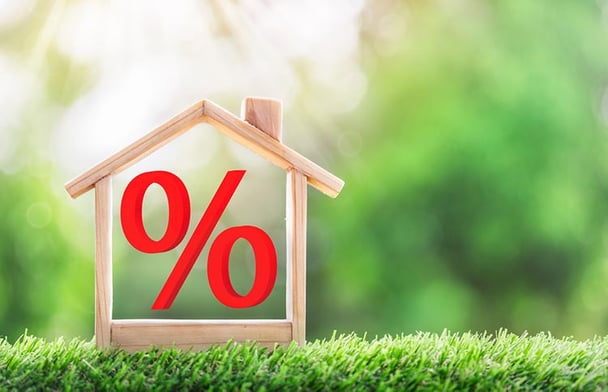
Rising and falling interest rates create a ripple effect across many sectors of the national economy. Homeowners and real estate investors know well how low interest rates can affect borrowing costs. Low interest rates spur home buying and loan activity on investment properties since lower interest rates make it cheaper to borrow money. It also can change the profitability of an investment property or reduce your monthly mortgage payment on your primary residence.
Interest rates work differently for primary residences and investment properties, though. Let’s take a closer look at the factors that affect borrowing costs for both types of property ownership.
Interest rates on Primary Residences
Your primary residence is where you hang your hat at night. It can be a one-bedroom apartment in Tulsa, a midtown condominium in Houston, or a luxurious single-family residence in the foothills of the Santa Monica mountains. Since it’s the place you call home, you’ll typically get the best interest rate on a primary residence when borrowing money for a mortgage. That’s because lenders view loans for primary residences as less risky than other types of loans since homeowners are less likely to forgo making their loan payments if they happen to fall upon rocky financial times.
Your primary residence must be the place where you spend most of your nights. It also must be the address you use when filing your tax returns, or what’s listed on your driver’s license.
Last year was a good time for borrowing for primary residences – interest rates for 30-year conventional loans hit an all-time low of 2.65 percent in early 2021. Rates have steadily begun creeping up, though, and as of mid-February, 2022, interest rates for 30-year conventional loans were nearing 4 percent.¹ Interest rates on 15-year loans, meanwhile, were just over 3 percent.
Note: The rates highlighted above are for prime creditworthy borrowers. Many different factors affect individual borrowing costs. We’ll cover those requirements a bit later.
Interest Rates on Investment Properties
A rough estimation is that borrowers can expect to pay between .5 and 1 percent higher interest rates for loans on investment or rental properties. Interest rates depend largely on the borrower’s financial and credit situation; however, you’ll generally pay more in interest for investment properties than you would for a home loan because lenders are assuming a slightly higher level of risk.
The thinking is that borrowers are more likely to default on loan payments for investment properties than their primary residences in tough economic times, which makes these types of loans riskier for lenders. They charge higher interest rates for that elevated risk, and borrowers must meet some strict qualifications in order to qualify, such as a larger minimum down payment.
Factors That Affect Interest Rates on Primary Residences and Investment Properties
Loans aren’t cookie-cutter – Borrower A might get totally different loan terms than Borrower B even if they apply for the same amount at the same place on the same day.
Both types of lending are based on the following criteria:
- Credit score
- Cash on hand
- Debt-to-income ratio (your monthly payments versus gross monthly income)
- Loan-to-value ratio (the amount financed versus the value of the financed property)
After the subprime mortgage meltdown that led to the Great Recession, borrowers must demonstrate solid numbers in each of these categories to qualify for a home loan – and the requirements are even stricter for investment property loans.
The Bottom Line
In addition to the personal factors mentioned above, there are other elements outside of investors or homeowner control that affect interest rates for primary residences and investment properties. These include job growth, the state of the national and global economies, and inflation. Federal monetary policy also plays a part in interest rates.
Consumers may see aggressive interest rate hikes in 2022 as the Federal Reserve attempts to control escalating inflation. A consensus is not when rates will go up, but by how much. Remember, the crux of higher interest rates is increased costs to finance primary residences and investment properties. While it won’t affect consumers with fixed-rate loans, borrowers with variable-rate loans could feel the pinch if their interest rates reset to less-favorable terms.
Source:
1. Mortgage Rates Continue to Jump, Freddie Mac, http://www.freddiemac.com/pmms/



